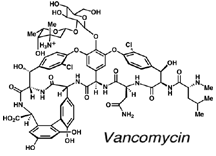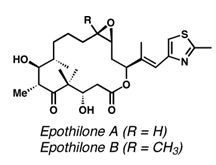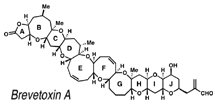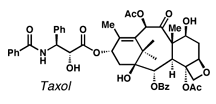|
(page 2 of 3)
This field is augmented by the discovery of new structures
in nature. Nature has not revealed all its secrets to us yet.
In the forest, there are so many hidden compounds—we
don’t know their structure and their use. In the soil,
where the bacteria and the fungi live, there are also many
hidden compounds. The ocean is full of organisms we have not
explored. I’m sure that it is rich in new molecular structures
which will come to our attention sooner or later. They will
challenge synthetic chemists to invent new methodologies to
synthesize these new types of structures.
I see a great future for the art and science of total synthesis.
And, in addition to that, it is a great area to train graduate
students and post-docs because it puts in front of them severe
challenges in which they have to bring to bear all the tools
of synthetic chemistry. They have to sharpen their minds and
become practitioners in the art of making these molecules.
There is a great need for this kind of training today—in
fact, there is a shortage in manpower in this field. We do
not have enough students and people in the industry will tell
you the same thing.
What’s a typical project for graduate students?
Typical project? I can mention famous compounds like taxol,
brevetoxin, vancomycin—these are very famous molecules—the
CP molecules we have synthesized recently, or the epothilones
which are extremely powerful anti-tumor agents. There are
many. That’s what makes it so exciting, you see. The
field is very vibrant, very exciting, and we are very fortunate
to have a great number of talented students and post-docs
here.
The practitioners of total synthesis exercise taste in selecting
these targets. We look at the molecular architecture, [for]
something that looks completely novel. Structures which I’ve
seen for 25 years don’t excite me any more, but if I
see something entirely new, unusual architecturally, then
I’m attracted to it.
I also look for important biological activity in looking
for a target. Taxol is an anti-cancer agent, vancomycin is
an antibiotic. That’s an additional advantage because
at the end of the road you know you are going to have a biological
twist to your project. Combining chemistry and biology makes
the project more worthwhile, more exciting, and more fulfilling
for the student. They get training in both fields at the same
time.
How do students deal with all the problems that can arise
in a complicated, multiple-step synthesis?
Typically when they come into the group, we have discussions
about the various projects that are ongoing. Sometimes they
can join an ongoing project, [and] sometimes we pick new targets
from the literature. Then we make a plan. I do encourage the
students to participate in this planning, because that is
a very important aspect of their education. We have to teach
them how to think creatively and design their own synthetic
strategies, because this is what is going to make them full
and complete scientists who stand on their own feet. And that’s
very attractive to them as well. They don’t want to be
a pair of hands following the instructions of the professor.
They want to be partners all the way from the beginning so
they can exercise their creativity and sharpen their skills
intellectually as well as experimentally.
There are many, many problems awaiting us along the path.
We don’t worry about that. That’s a given, and we
know that’s part of the excitement. We make as good a
plan as we can, given the knowledge that we have, and don’t
worry about the rest.
I tell the students, “Just get in the lab, we have
a very good plan to follow, and things are going to crystallize
sooner or later. Persist and withdraw when you are faced with
difficulties, redesign the strategies, and try again.”
[In this field], you are going to fall on the ground many
times. This practice requires stamina, requires character.
It’s a real test of character, whether you can withstand
these failures, one right after another. But that’s what
makes a skillful professional. Whether it’s in business,
in science, or in any endeavor. You have to be able to face
difficulties and develop the abilities and methods to face
these difficulties—to stand on your feet and try and
try again. Sooner or later this seemingly unsolvable problem
will melt in front of this human persistence and innovation.
And as you’re going along the path, you discover things
that you never expected—completely by serendipity. Sometimes
it’s like a hidden vein in the ground, which gives you
gold or oil. [This vein] yields many things to figure out
and explore. Of course, you have to be alert and astute to
recognize an important discovery like this when it comes along.
Can you give me an example of such serendipitous discoveries?
Well, a very good example is one of our recent projects
in the CP molecules. These CP molecules were really diabolical
in their molecular architecture. They posed untold problems
and challenges before they finally succumbed to the assault
by the students who were involved. Along the way, we encountered
an unexpected result, which did not help us solve the problem
and yet gave us a gold mine of new synthetic methods to make
heterocycling molecules. They are the ideal molecule for biological
screening because they have the ability to bind to proteins.
So out of that serendipitous discovery, which we made a couple
of years ago, we probably have a dozen publications that describe
new synthetic methodology that can be applied to combinatorial
chemistry to give us compound libraries for biological evaluation.
1 | 2 | 3
|

|





Some of the molecules that the Nicolaou
lab has synthesized include vancomycin, CP-225,917, CP-263,114,
epothilone A and B, brevetoxin A, and taxol.
|

